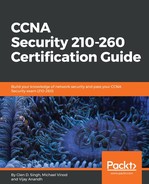The history of cryptography dates back to ancient times when messages were sent between two parties in a secure manner. In the modern age of technology, information security plays a vital role in everyday life, from entering your login information on a Facebook website to just chatting on the WhatsApp messenger platform.
Have you ever wondered whether, while chatting with someone on WhatsApp, the messages you send and receive could be intercepted and read by another person who is not authorized to view them? In the past, WhatsApp did not provide an end-to-end encryption service, which means that, if a malicious user were performing a Man-in-the-Middle (MITM) attack or even sniffing the traffic between the victim and the other person, they could see all the messages that were exchanged between the two parties in plain text. Some people think that they have nothing to hide when they send a message across an insecure platform, but what we have to remember is that time-sensitive information may be sent over, whether it's a password, telephone number, email address, residential address, or even something which is private to a user.
With cryptography, organizations are now able to protect their data and their customers' data securely using the appropriate algorithms and technologies. An example of cryptographic technology is the use of a Virtual Private Network (VPN) for connecting branch sites together over an unsecure network such as the internet, a remote access VPN for a teleworker employee, or even a field engineer who needs to access the corporate network while not in the office at the time.
Cryptography is the scrambling of data that is to be sent over an unsecure channel. Cryptography focuses on the confidentiality of data in different states: data at rest, data in motion, and data in use.
- Data at rest: Data at rest is data that's not in use and resides on a storage device such as a hard drive, CD/DVD ROM, flash/thumb drive, and so on. In this state, the data is dormant and encryption can be applied to ensure it's kept private. Even if it's stolen or lost, confidentiality is still maintained.
- Data in motion: Data in motion or data in transit is when the data is moving between devices. In this state, it's more vulnerable to cyberattacks such as MITM and sniffing. Technologies such as a VPN assist by ensuring a secure channel is used to transport the data over the untrusted or unsecure network connection. The use of Secure Sockets Layer (SSL)/Transport Layer Security (TLS) can secure data between a user's computer browser and a website.
- Data in use: Data is in its most vulnerable state as it is unencrypted and is currently being accessed by a user or multiple users at the same time. Because it's unencrypted, it's exposed to any type of cyber attack or threat.
